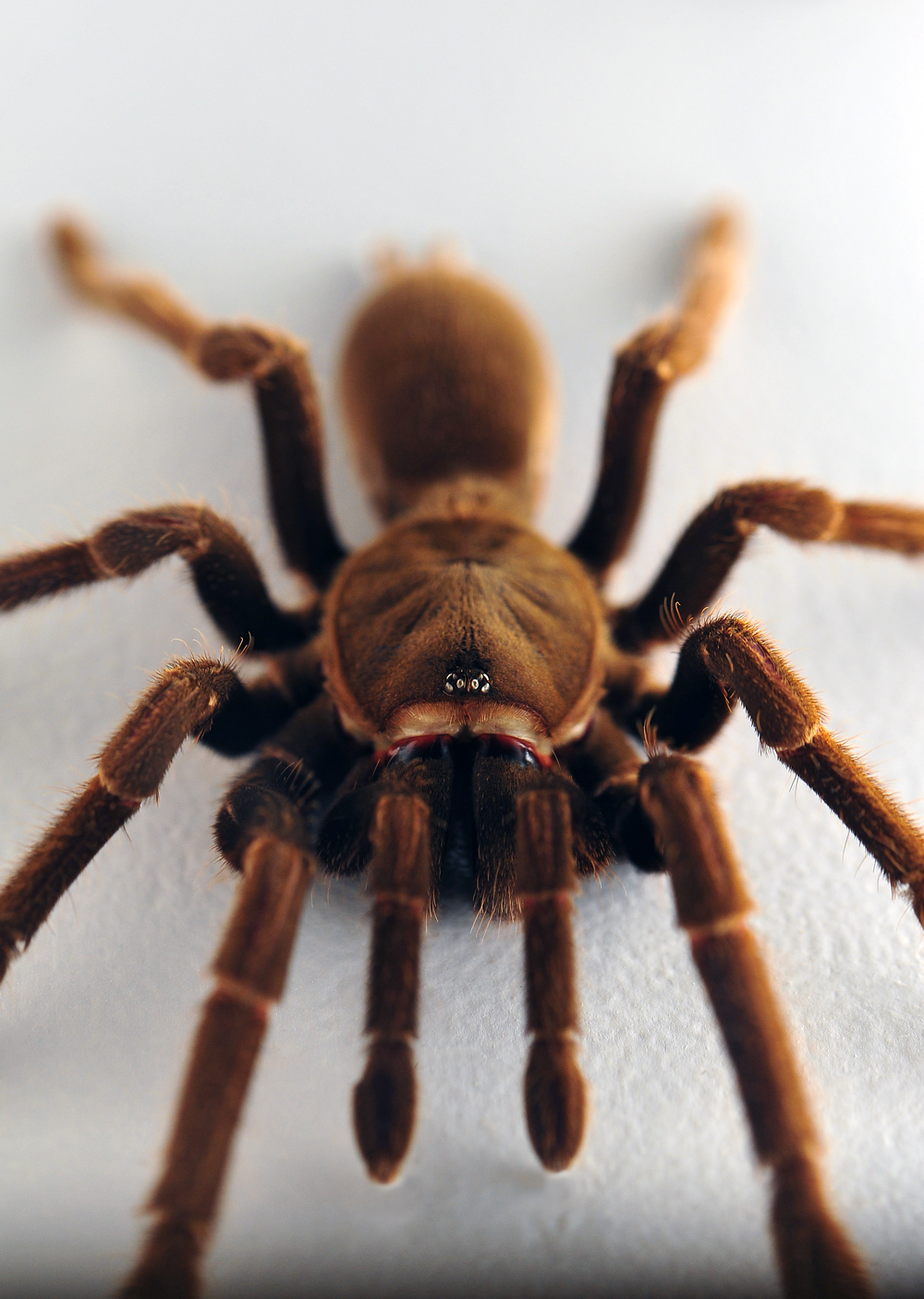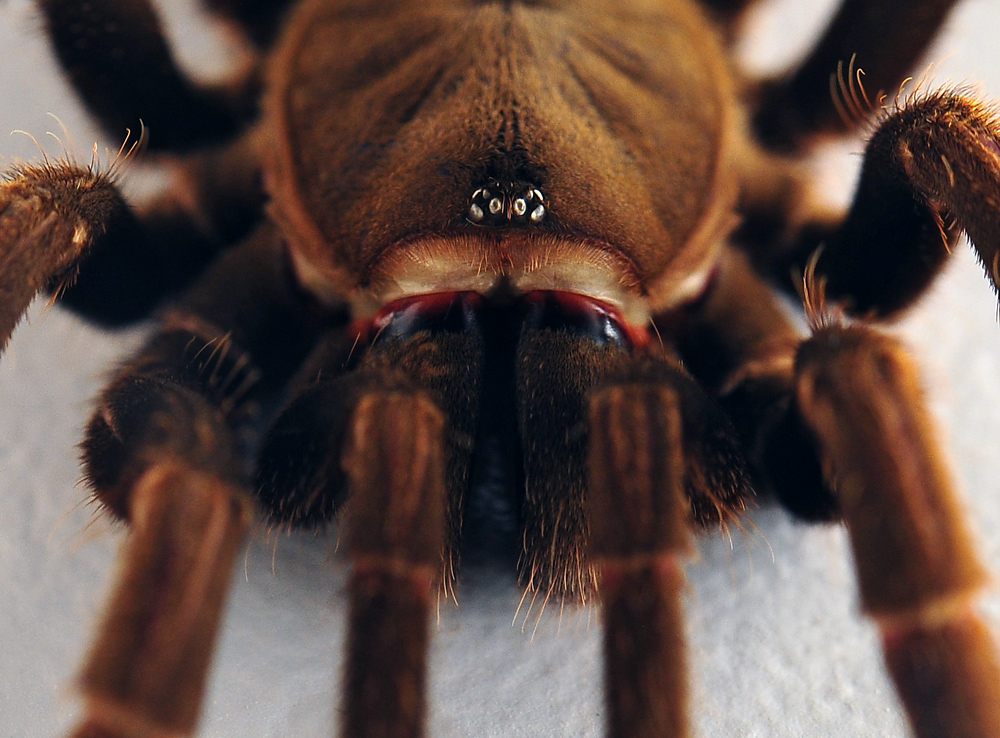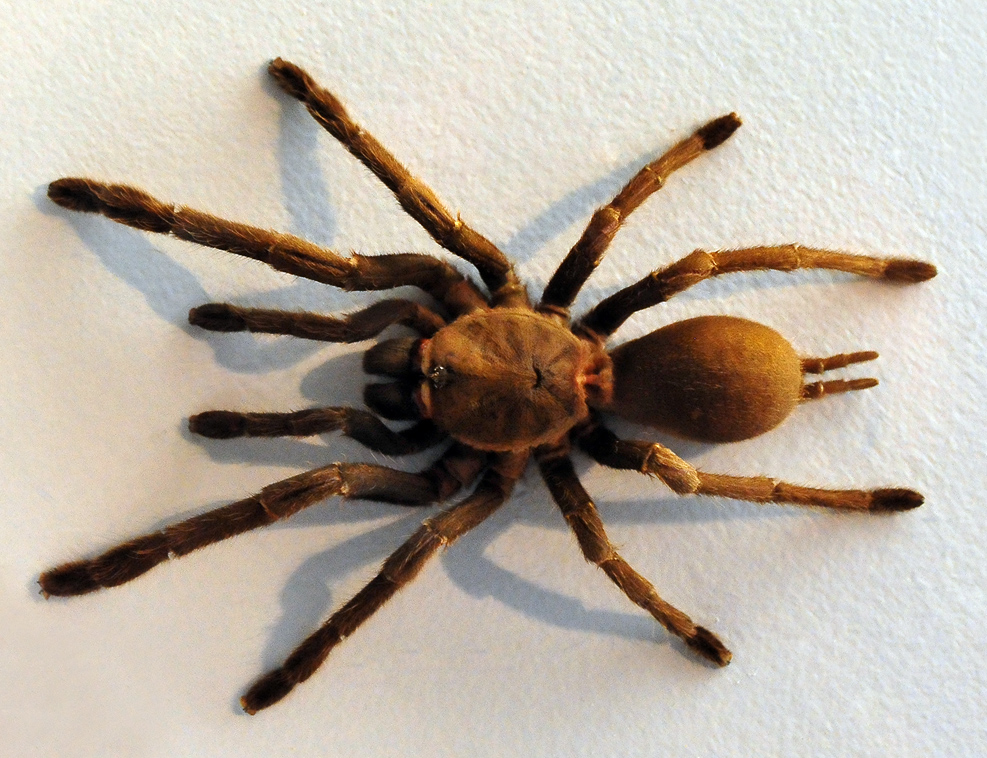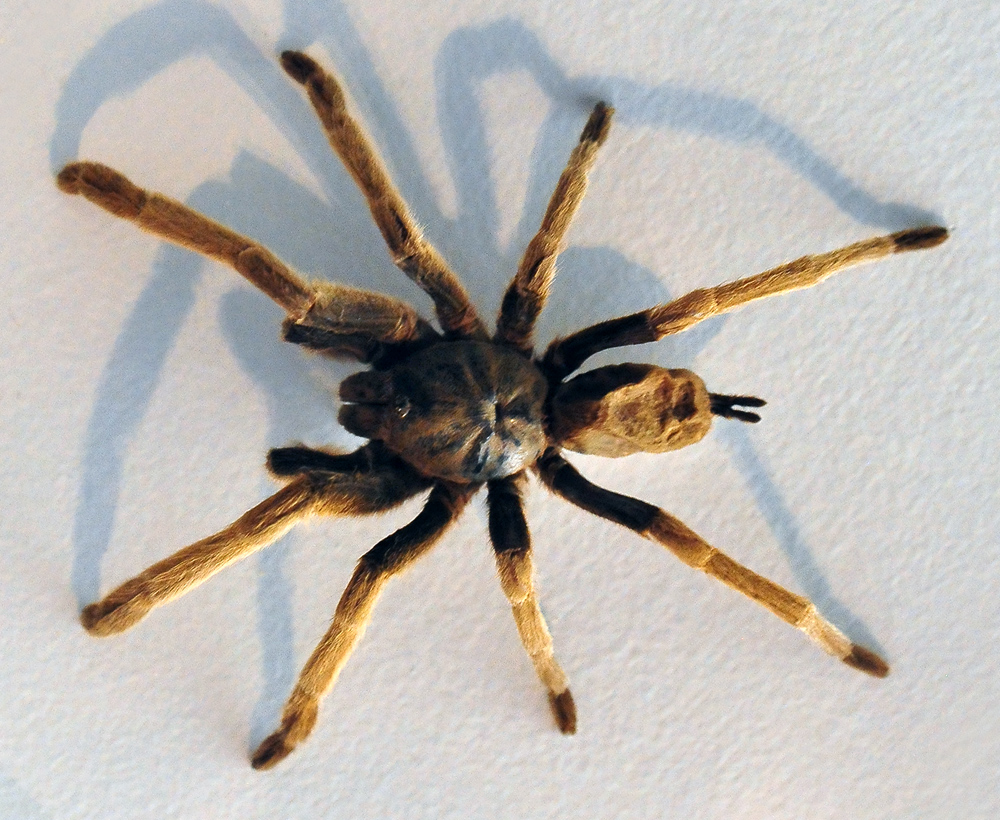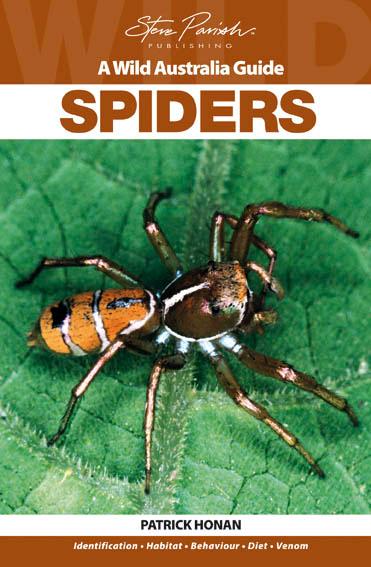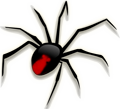
|
Eastern Tarantula
Phlogius crassipes
Other Names: Whistling Spider, Barking Spider, Bird-Eating Spider, Selenocosmia crassipes (the current generic name Selenocosmia has been wrongly applied to the Australian species and will be revised, the generic name Phlogius being reinstated). Family: Theraphosidae (Tarantulas), currently 7 known species in Australia, estimated total 30 Australian species, about 950 species in the world. Size: Male body length up to 70 mm, Female body length up to 90 mm. Legspan up to 220 mm (22 cm). Distribution: Throughout Mid-East and North Queensland. Other Australian tarantulas may occur more southerly, to North-Western Victoria. Status: Tarantulas are highly threatened by the pet trade which is responsible for about 2000 tarantuals being sold in each state each year. From the Australian Museum, "The species that is most often kept as a pet is often sold as Selenocosmia crassipes. However Habitat: Likes areas with plants. Lives in burrows in the ground up to one metre deep. May come to the surface in heavy rain. References: Whyte and Anderson, Framenau, Baehr & Zborowski, Wikipedia, Australian Museum. About the Eastern TarantulaThe Eastern Tarantula is Australia's largest spider. Diet: The Eastern tarantula has been known to eat small birds, hence the nickname "Bird-eating spider"; however, they typically eat large insects, small mammals and amphibians, such as cane toads and frogs. Danger: Wikipedia says a bite from an Eastern tarantula can cause up to six hours of vomiting, but is not fatal to humans. They can be fatal to smaller animals like dogs and cats within 30 minutes. Treatment: No antivenom is given (there is none available nor is it required). Note that dead spiders usually fade in colour, so nearly all the spiders will look blacker or darker in colour in real life than they do in the photos of dead spiders from the museum.
Recommended ReadingSee Also
Australian Mammals Share This Pageaustralian eastern museum species spiders tarantula Content is copyright © Survive.au 2005-2025 All Rights Reserved. Terms of Use. Definitely read the disclaimer before trying anything from this website, especially including the practices and skills. This website uses affiliate links – this doesn't cost you any more, but I get a commission on purchases made through the website. As an Amazon Associate I earn similarly from qualifying purchases. |
